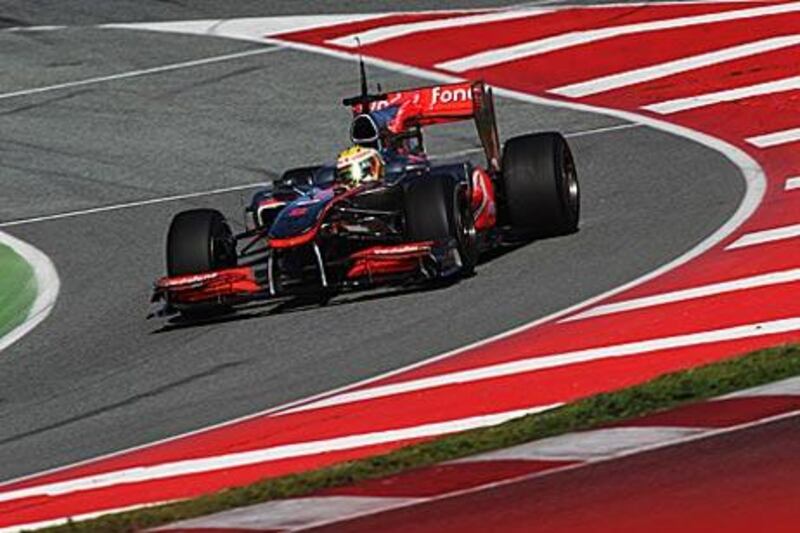It was once said that Formula One drivers were almost superfluous at the Circuit de Catalunya, so familiar were the cars with almost every contour. Located 20 kilometres north-east of Barcelona, the track has traditionally been a popular test venue - a detail that tended to limit the spectacle during race weekends.
Almost every team would turn up with its Spanish Grand Prix set-up optimised and few mysteries to unravel. The grid tended to reflect a pre-established hierarchy and races were generally processional. Fans recall iconic images of Nigel Mansell and Ayrton Senna tearing down the main straight, millimetres apart at 200mph, as they duelled for supremacy in Spain ... but that was 1991, during Catalunya's inaugural F1 race. Memorable moments of that kind have since been scarce.
Such details do not, however, dilute the challenge teams face this weekend. Testing restrictions mean the circuit is no longer as familiar as it used to be: the latest cars ran in Barcelona for four days in February, but they have evolved considerably in the interim. After four grands prix away from the sport's European heartland, the development race has stepped up a gear and an extra week off between events has given teams a chance to minimise the impact of the volcanic disruption that delayed return trips from China.
The consequence is a raft of upgrades for almost every team. Mercedes, for instance, have lengthened the wheelbase of the MGP W01 chassis, in a bid to improve the weight distribution and create a better handling balance - something the sport's former king Michael Schumacher has craved since the start of the campaign, when he returned from a three-year sabbatical. The German prefers a car with strong front-end bite, but so far he has been unable to find a set-up that suits him on this year's narrower front tyres. The team hope wheelbase alterations and a package of aerodynamic improvements will enable their talisman to recover his form of old.
The performance quest is not restricted to the higher-profile teams. Virgin, HRT and Lotus, all newcomers, expect to be a little closer to the pace in their maiden grand prix in Europe - although a protracted return from Shanghai left Virgin with time to produce only one revised chassis, which will be entrusted to Timo Glock. Mike Gascoyne, the Lotus technical director, is upbeat about his team's prospects. "Every team is bringing upgrades to Barcelona," he says, "but we started building our car relatively late and froze its initial specification very early in the design process, so we're hoping our changes will be more significant."
At the front, though, tyre wear is likely to be as decisive a factor as any technical upgrades. Barcelona's proliferation of long, fast corners will suit the Red Bulls' aerodynamic finesse, but they also put substantial loads through the tyres, a factor that favours the Ferraris' customary tenderness and gives Fernando Alonso an opportunity to win his home race for the second time. The Spanish GP used to be a quiet event, virtually bereft of spectators because the nation traditionally preferred two wheels to four. Alonso's emergence as Spain's first F1 champion has, however, helped to create one of the most vibrant events on the calendar.
After Shanghai, it's not just the cars that will feel a little different. sports@thenational.ae





